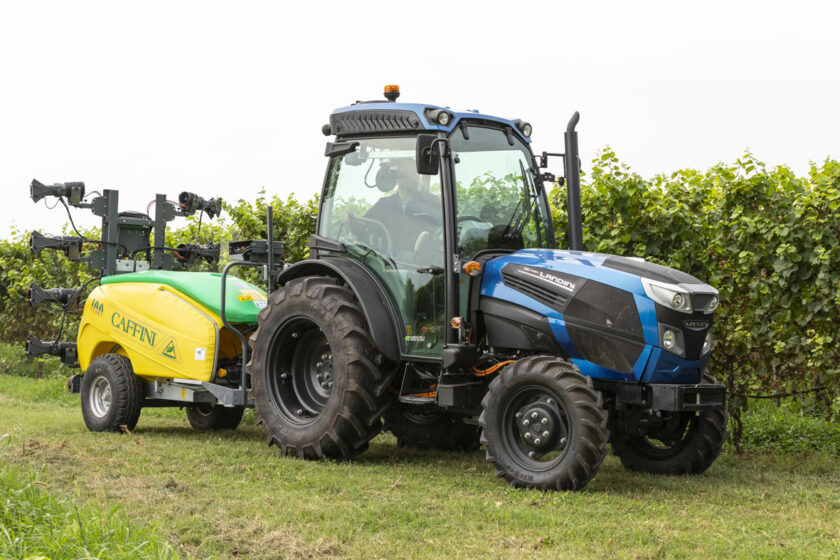
Argo Tractors continues its research to explore possibilities for electrification in its tractors. After the “Rex Electra” hybrid prototype introduced in 2021 and the “Rex4 Full Hybrid” concept in 2022, the spotlight is now on the “Rex4 Energy.”
In 2021, “Rex Electra” was designed to explore the application of hybrid traction systems in tractors—systems that move a vehicle partly through mechanical and partly through electric power. This solution has already gained wide application in the automotive sector and underpins the powertrains of the latest Jeep models. “Rex Electra” was equipped with two 12-kilowatt electric motors on the front axle, one per wheel, electronically controlled and activated when needed to support the mechanical rear-wheel drive, which remained the machine’s primary power source. This system proved effective not only for traction but also for maneuverability and fuel efficiency, with consumption about 10% lower than that of a comparable traditional tractor.
The design approach of the “Rex4 Full Hybrid,” introduced in 2022, was different. In this case, there was only one electric motor, positioned between a 55-kilowatt thermal engine (about 75 horsepower) and the transmission. The electric motor, rated at 50 kilowatts, was connected to the powertrain via clutches electronically controlled by the “PMS” (Power Management System), which supervised power flows and, more generally, the electrical consumption of the various devices. The system identified the optimal operating point for the propulsion systems. This setup allowed the electric component to support the thermal unit, resulting in increased dynamism, with the tractor capable of producing a combined power output of 80 kilowatts (around 110 horsepower). It could also operate in a dual-mode system, using either just the thermal engine or just the electric motor. To enable the electric-only mode for at least two hours, a 30-kilowatt-hour battery pack was installed under the cab, recharged by both the thermal engine and the electric motor during deceleration phases.
Energy for equipment
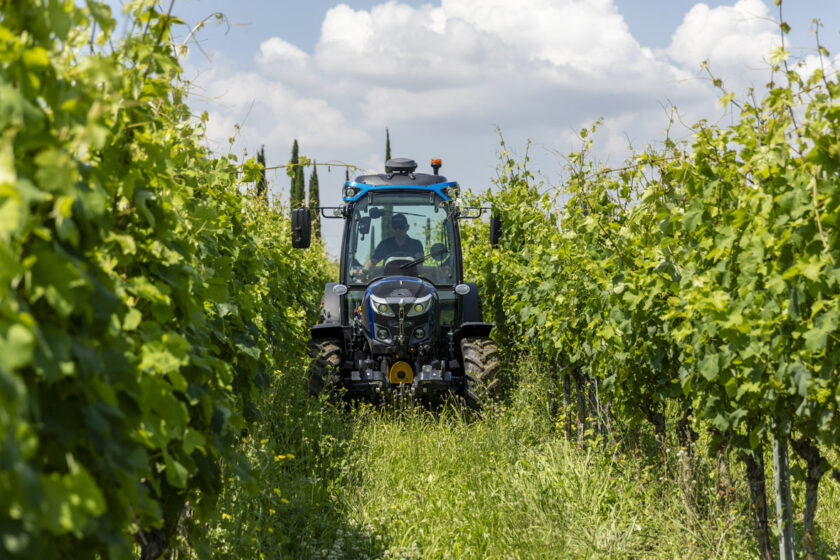
Now, at Eima 2024, Argo Tractors is taking another step forward with the “Rex4 Energy” prototype. This model explores the possibility of powering future electrically driven equipment without drastically altering the tractor’s basic configuration. While transitioning from thermal to electric propulsion remains under evaluation—due to the modifications it requires to traditional tractor layouts and safety and autonomy issues posed by batteries—it seems far more realistic to electrically power agricultural implements, particularly those used for lighter tasks like seeding, surface tilling, treatments, and forage management. In these cases, the power required by the equipment is relatively low, and by integrating an electric generator powered by the thermal engine into the tractor, a more efficient system could be created compared to the mechanical or hydraulic systems currently in use. This setup wouldn’t even require additional batteries beyond the accumulator that tractors already have.
Low power absorption
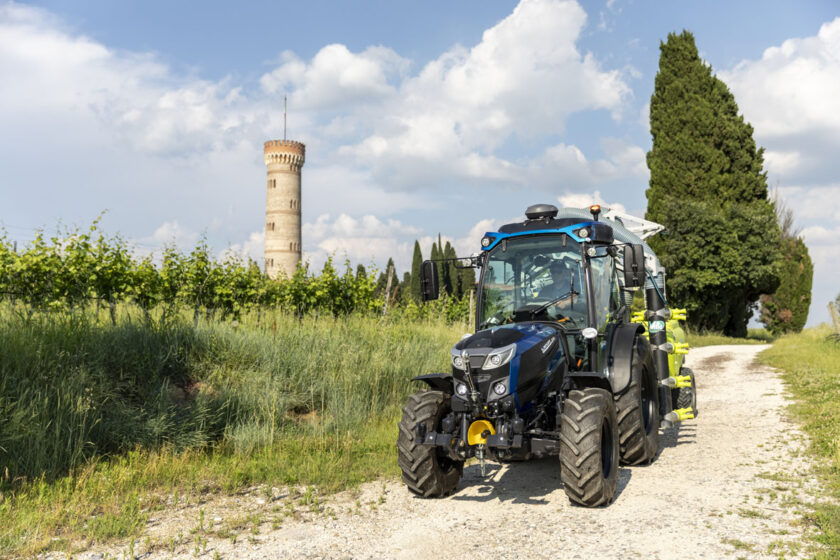
“Rex4 Energy” operates in this manner: a 55-kilowatt Deutz thermal engine (about 75 horsepower) powers a 10-kilowatt (approximately 13 horsepower) electric generator via a belt, which, through an inverter, supplies energy to the equipment in use. Field tests have been conducted by pairing the tractor with the Caffini “Zephiro” electric sprayer, which won an innovation award at Eima 2024. The test site demonstrated excellent functionality and several advantages over a traditional setup with the same configuration.

First, there was reduced noise and increased maneuverability, thanks to the absence of a mechanical drive shaft, which allowed for tighter turning angles. To further assist the operator, the tractor was also equipped with the Landini version of the “HyperSafetyView” vision system, which was awarded another Eima innovation prize and is described elsewhere in this issue.
Track Tractors Get an Upgrade
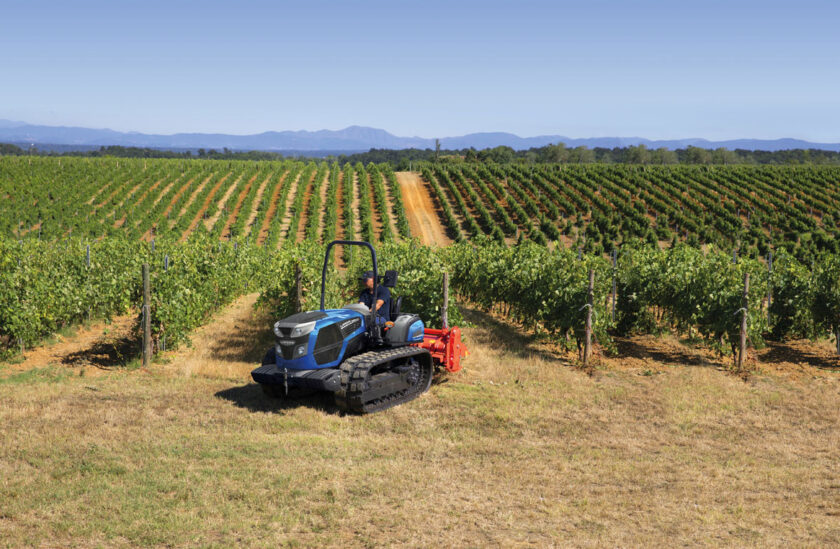
Among the most popular tracked tractors on the market for years, and a leader in the category last year with its 85-horsepower model, the “Trekker4” series will debut in 2025 with new features related to driving controls, distributors, the platform, and the fuel tank. There will be five models—”4-085,” “4-095,” “4-105,” “4-110,” and “4-120″—all powered by Deutz engines with a 2.9-liter displacement, compliant with Stage V emissions regulations through passive regeneration particulate filters and DOC filters, paired with an SCR system on models above 75 horsepower. The machines will be available in “F” and “M” versions, depending on whether they are intended for specialized or hilly applications, and all can be equipped with 450-mm wide metal or rubber tracks.
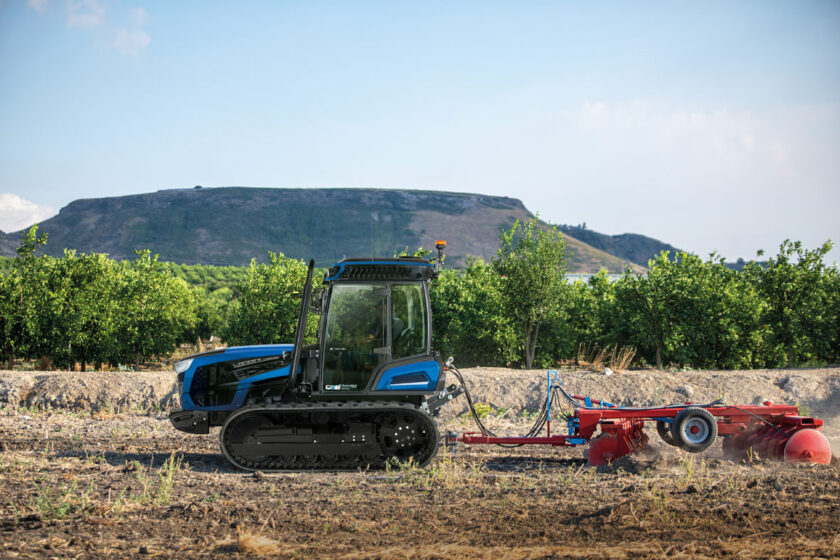
A notable improvement in the new range is increased operator comfort, thanks to targeted interventions on the controls and the suspension of the driving platform, particularly in cab-equipped versions, which now float on four hydro silent blocks (two at the front and two at the rear). The driver’s seat is also pneumatically suspended, and there is an option for a cabin certified to Category 4, equipped with activated carbon filters. The transmission offers 16 forward and eight reverse speeds with creeper or overdrive options, and the onboard hydraulics have been enhanced with a triple pump system, providing 84 liters per minute for services and 28 liters for steering. Like all Landini tractors, the new “Trekker4” models are equipped with the most innovative digital systems, including the Landini Fleet & Remote Diagnostics Management platform for fleet management and remote interventions, as well as “Landini Farm” for agricultural and warehouse management. Notably, engine maintenance intervals have been extended to 1,000 hours.
The Debut of “Smart Cab”
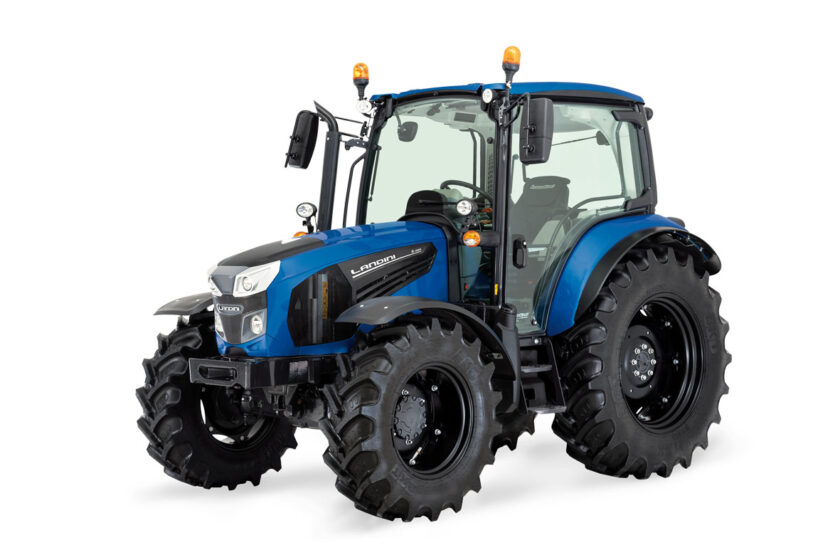
The “Smart Cab,” the new cabin equipping Landini’s high-end “Series 7 Robo-Six” tractors, makes its international debut. Designed and manufactured in-house by Argo Tractors, it offers 14% more interior space, 16% increased visibility, and a significant reduction in noise and temperature thanks to special thermal glass, called “Comfort Sky,” developed by Saint Gobain. The lighting units are all LED-based, and the rearview mirrors are electric. Inside, the cab features an infotainment system based on an Alpine radio with four speakers, which can be integrated with Apple Car and Android Auto, as well as a refrigerated compartment. Other highlights include the dashboard, which serves as an information hub for the machine’s functional status, and a redesigned digital cluster behind the steering wheel that functions as a projector for better management of all tractor functions. This integrates seamlessly with the 12-inch “DSM Plus” monitor located on the multifunction armrest.
The cab also includes the “EazySteer” function for electronic steering modulation, combined with assisted satellite guidance options and cabin suspension, which can adjust stiffness by modifying shock and vibration absorption capacity either mechanically or through the semi-active anti-damping system controlled electrohydraulically. Naturally, the “Landini Fleet & Remote Diagnostics Management” system is present, measuring vehicle efficiency in terms of fuel consumption, working hours, and maintenance alerts, all managed through a portal that allows the fleet manager to maximize tractor activity and monitor operating costs.
Title: Landini “Rex4 Energy”, there’s no two without three
Translation with ChatGPT







